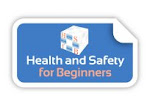31 August 2006 - Opinions Vary on Corporate Manslaughter BillThe introduction of the Scottish Corporate Manslaughter Bill to Parliament in Westminster, has once again brought many opinions as to the way in which negligent companies, who have caused deaths through bad health and safety practices, should be treated in the law courts.
The Scottish Trades Union Congress (STUC) have voiced their opinion, claiming that "while the bill may make it easier to prosecute companies over deaths, individual directors will still be able to escape personal liability."
Mr. Ian Tasker, STUC Assistant Secretary (Health & Safety) pointed out that the STUC would continue it's support of the private members' bill, as his opinion was that it would ensure all involuntary deaths in Scotland would be prosecuted fairly, regardless of who may have committed the crime.
The Trades Union Congress (TUC) welcomed the bill's introduction to parliament. They stated the TUC would study the detail of the Bill and would hope legislation would make prosecutions of negligent companies who cause deaths easier to bring to court.
However, Mr. John Cridland, Deputy Director-General of the CBI employers’ body, was in support of the Government’s focus on collective responsibility and company liability and thought that if Scotland had it's own legislation on Corporate Manslaughter, then this would "undermine consistency".
A national campaign group, Families Against Corporate Killers (FACK), launched in July this year and set up by families who have lost their loved ones in the workplace, have expressed disappointment at the contents within the Bill. FACK say company bosses require the "threat of imprisonment", in order to deter them from bad health and safety practices. They want imprisonment for gross negligence to be included in the Bill, which it does not have, as it stands, at the moment.
The Corporate Manslaughter Bill continues to cause controversy and remains inconclusive. In the meantime, people are still being killed in their workplaces through lack of good health and safety practices.
Although the 2005/2006 fatal injuries report, published by the Health and Safety Commission (HSC) recently, showed a 5% reduction in fatalities in the workplace, the horrifying figure of 212 people lost lives in the workplace requires the much needed corporate manslaughter bill to be concluded forthwith, before even one more death occurs.
Do you have an opinion? Do you have a solution? Should the UK have one Bill only? Whatever your thoughts on this very controversial Bill, we at HSfB would be pleased to hear them.
We can be contacted by e-mail on contact@healthandsafetytips.co.uk or by Private Message through our Forums.
The Corporate Manslaughter Bill can be accessed by clicking the following:
Corporate Manslaughter and Corporate Homicide Bill
Further information on Fack can be accessed by clicking the following:
FACK - Families against corporate killers
The statistics for fatal injuries report 2005/2006 can be accessed from the HSE Website by clicking the following:
HSE and HSC news » Statistics of fatal injuries report 2005/2006
Article by Alexandra Johnston

